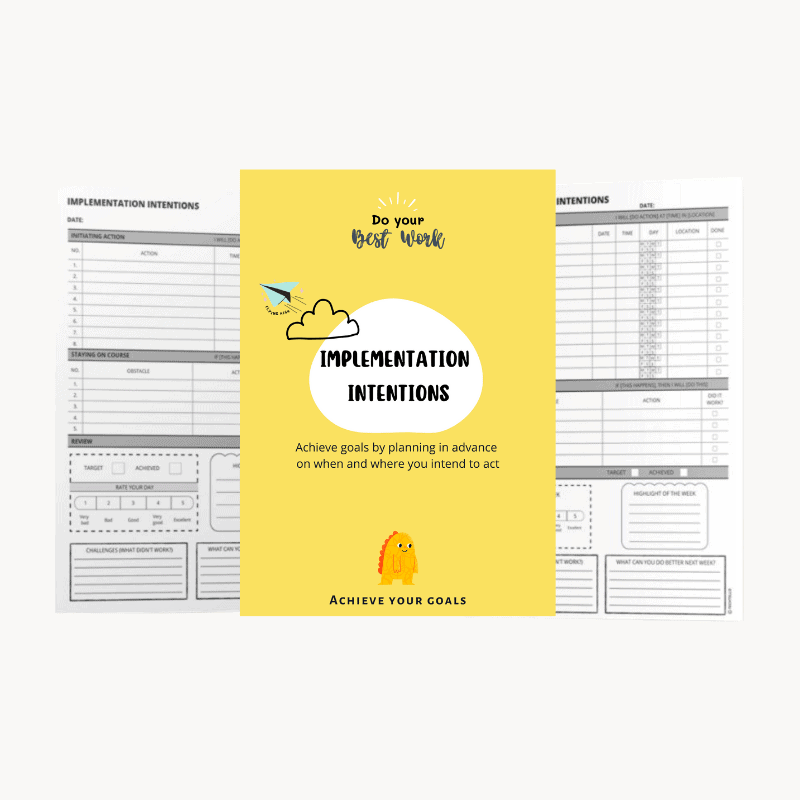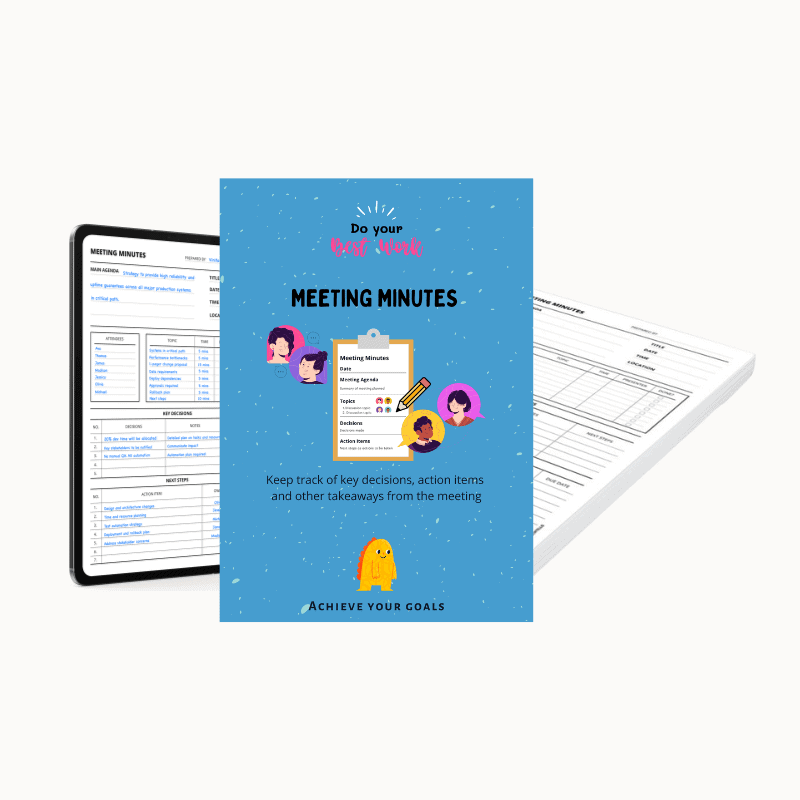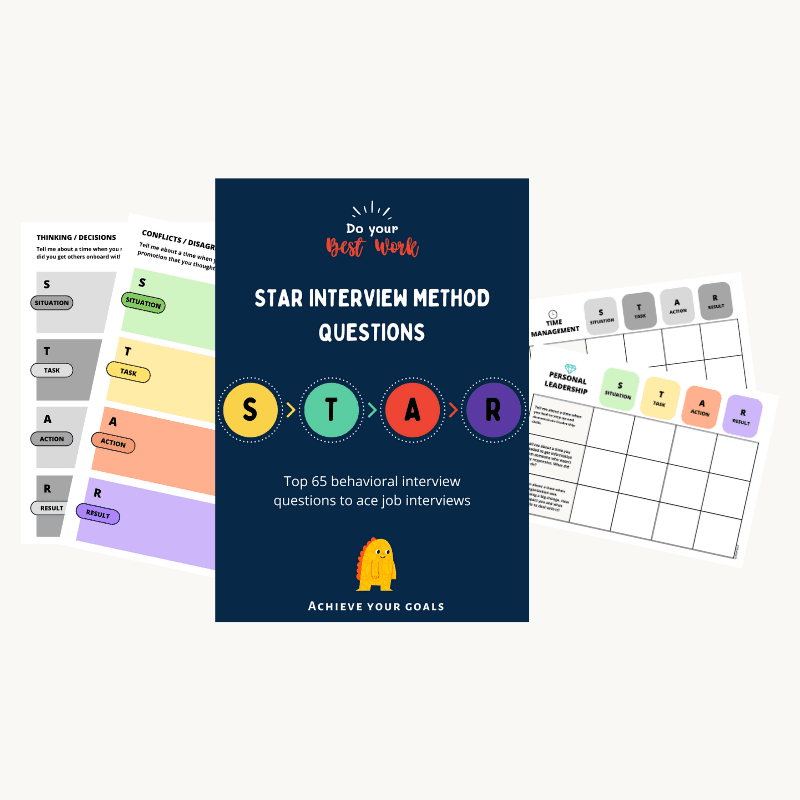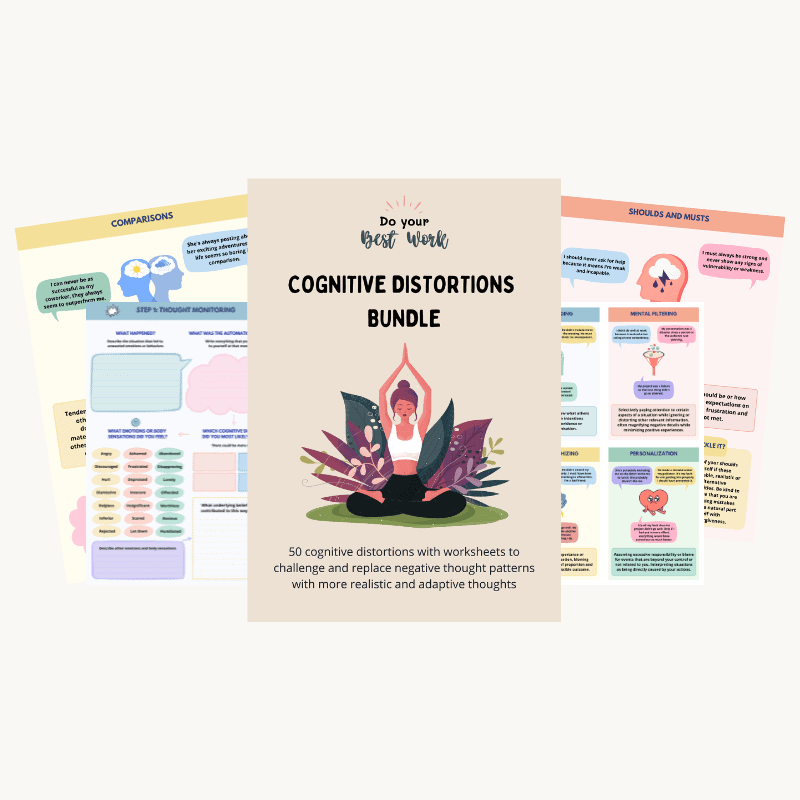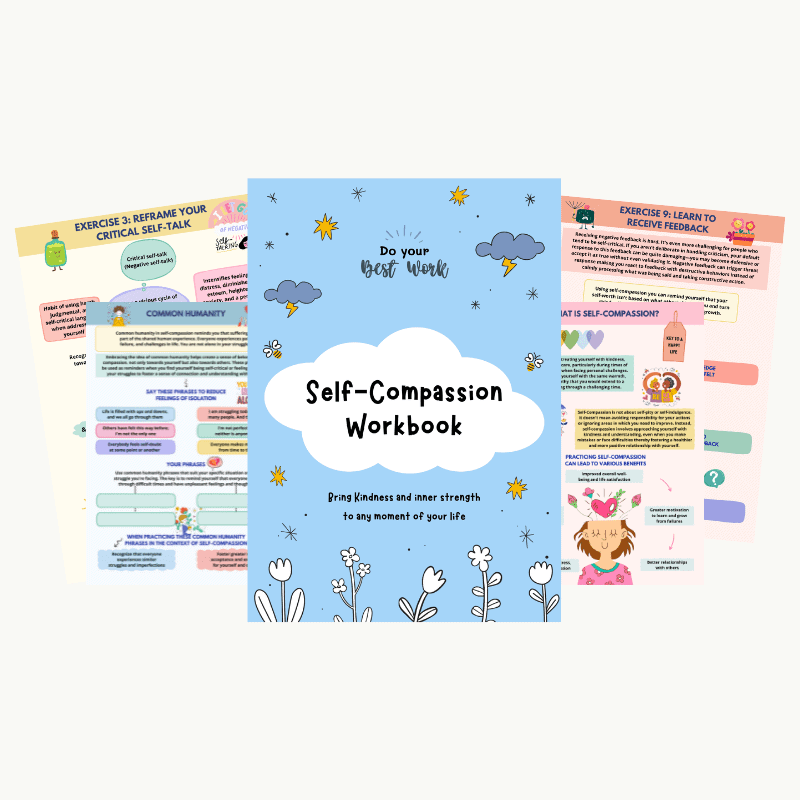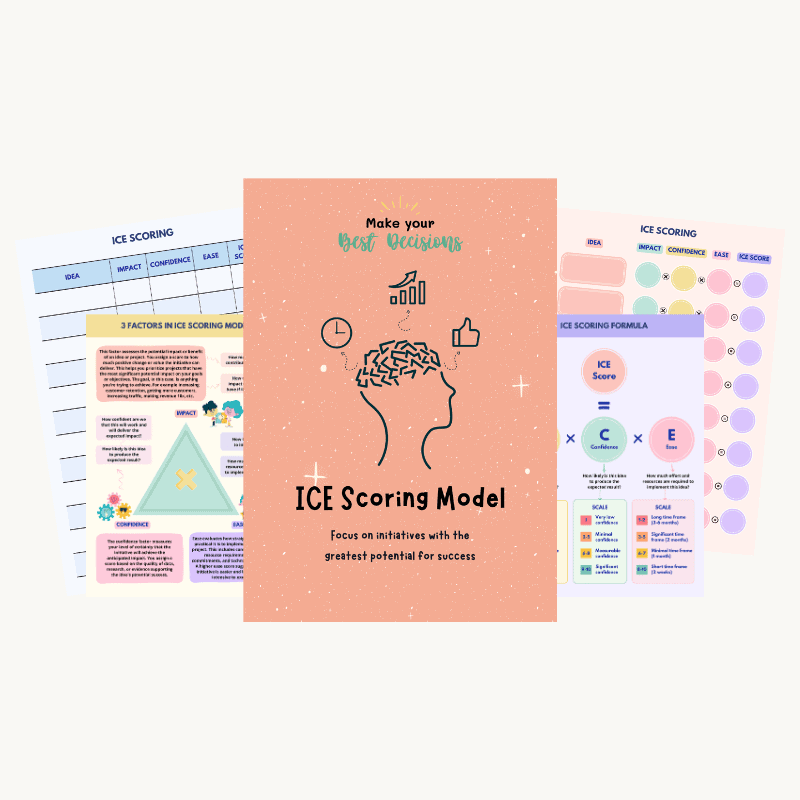How to Stop Procrastinating and Get Down to Work

Procrastination is a silly habit—even when we know how important something is, we end up delaying or avoiding it.
Procrastination wins when it over powers our sense of judgment—we know that not taking action is not right for us and yet that’s exactly what we do.
Procrastination not only makes us fall through on our commitments, not being able to make progress on what we set out to do makes us feel powerless, helpless and ineffective.
The constant guilt, shame and anxiety from not doing the work consumes us. We end up putting more effort and energy than it would have taken to do the work.
Beating procrastination won’t happen by chance and you can’t rely on motivation to break bad habits. If you want to be more productive, apply the right strategies to break patterns of destructive behavior that make it easy to take action, gain momentum and stay productive.
Time is an equal opportunity employer. Each human being has exactly the same number of hours and minutes every day. Rich people can’t buy more hours. Scientists can’t invent new minutes. And you can’t save time to spend it on another day. Even so, time is amazingly fair and forgiving. No matter how much time you’ve wasted in the past, you still have an entire tomorrow.
— Denis Waitley
Left to its own devices, your brain will choose the path of least resistance—it will avoid anything uncomfortable and trick you into doing the easy thing. To make the most of tomorrow, you need to break old patterns and master new routines. You need to apply strategies that prevent you from falling back to your old habits.
Here are the 5 strategies to help you do just that:
Identify your real reason for putting something off
You may have the tendency to put things off or delay them till the very last moment.
I’ll get to it when the right time comes.
Don’t have the motivation to get started today.
I am not feeling like it.
Tomorrow might be better because [some excuse].
But, do you catch yourself giving these excuses?
It’s hard to change when you keep ignoring your avoidance tendencies or don’t even acknowledge it.
Coming in touch with what makes you act in self-defeating ways is crucial to push your destructive tendencies to the background and pull new empowering habits to the front.
There can be many reasons for procrastinating:
- Avoid the shame and humiliation associated with feelings of failure.
- Perfectionist tendencies that make you feel incompetent if you don’t perform exceptionally well.
- Thinking that your best effort can never be good enough.
- Imposter voice inside your head—your inner critic—that hijacks your confidence and makes you feel worthless and inadequate.
To understand how this plays out, imagine that your boss asks you to put together a proposal for a new product that’s due in two weeks.
There are two possibilities:
You get to work right away: You work hard during these two weeks and put together a great proposal for the product. However, your boss doesn’t like it. In this case, your best effort turns out to be not good enough. If you already deal with feelings of fraudulence, it can leave you questioning yourself, your competence, and your ability. Receiving criticism can expose you to others and invoke feelings of shame and humiliation.
You choose to procrastinate: You avoid working on the proposal till the last day. With only a day left to meet the deadline, you work throughout the day and night to get it ready in time for review. A bad outcome won’t be a surprise—you could have done better had you spent more time. A good outcome serves as evidence you’re not worthy—you didn’t work hard and just got lucky this time.
While doing the work exposes you to criticism, procrastination insulates you from the mortifying feeling that your best effort may not be good enough. You may push difficult work into the future to avoid dealing with your sense of potential inadequacy.
The first step to tackle procrastination is to come in touch with reality:
- What is it that I am trying to avoid?
- What’s my real reason for putting it off?
- What’s the worst that can happen if I give it my best shot?
- What would make me sabotage my own chance of success?
Habitual procrastinators will readily testify to all the lost opportunities, missed deadlines, failed relationships and even monetary losses incurred just because of one nasty habit of putting things off until it is often too late
— Stephen Richards, The Secret of Getting Started
There’s always a good reason as to why you act in ways that aren’t inline with your goals. Don’t ignore or deny these feelings. But at the same time don’t assume everything your mind tells you is true.
Stop Overthinking Workbook
Overcome negative thought patterns, reduce stress and live a worry free life.
Apply inversion principle
You may procrastinate when you imagine a task is impossible to do or harder than it really is. Your limiting beliefs can make you think of all the reasons why something can’t be done while ignoring all the reverse possibilities.
I don’t have all the information to get started.
No way I can meet this deadline! Why waste time doing it?
My solution isn’t great. I should wait for the perfect idea to strike.
The tendency of your mind to gravitate towards the worse, fixate on the bad and overreact to negative things while ignoring all the positive possibilities influences how you think, feel and act. It can manipulate your psychological state to act against your own good and well-being.
This is where applying the inversion principle helps.
Inversion is one of the most powerful, yet simple mental models to uncover things that you normally do not think. It helps you think outside your normal thinking patterns and approach problems from a different angle that opens a world of new possibilities that you didn’t know existed.
Inversion provides an objective way to explore the problem by thinking the opposite of how you naturally think. This form of reverse questioning can help you inquire your own assumptions, beliefs and in turn gain a better perspective to find answers to your original question with greater clarity and understanding.
Your natural mode of thinking may look for answers to:
- What events, behavior or action can prevent me from solving this problem?
- What events, behavior or action can prevent me from achieving this outcome?
- What gaps in strategy or process can stop me to get where I want to be?
- How can I fail in this project?
It’s not natural to think opposite of what you desire when the outcome is right in front of you, in confirmation with what you believe. Your mind does not seek limitations of your own assumptions unless you put a conscious effort to learn it by inverting the query.
Putting the same questions through inversion model will require you to answer:
- What can I do to solve this problem?
- What should I do to achieve this outcome?
- What strategy or process will help me get where I want to be?
- How can I succeed in this project?
Inversion is a powerful tool to improve your thinking because it helps you identify and remove obstacles to success.
— Shane Parrish, The Great Mental Models
Beat your procrastination habit by inverting your thinking. Instead of thinking about what makes the task difficult to start, think about what makes it easy. Instead of thinking about how you might fail, think about how you may succeed.
Utilize the power of small wins
When taking on a new challenge, a new assignment, or doing something for the very first time, a wave of self-doubt is unavoidable. Thinking about the outcome or the end result can stop you from getting started. The sheer volume and complexity of the task combined with the possibility of a failure make it all the more harder.
The path to reach your destination may not be clear yet, but you can get there through a series of tiny steps. Tiny steps require breaking down your goal into small, daily actions where each step takes you closer to the task.
For example:
- To give a presentation, practice speaking out loud in front of a mirror for a few days. Next, practice in front of a friend or a family member. Next, do it with your team. Keep increasing the challenge till you get to a point where giving a presentation seems natural.
- To write a book, start with writing 100 words daily. Increase the daily count from 100 to 200 to 500 to 1000 to 2000 gradually. Get feedback on your first draft from people you trust. Make edits. Repeat the process with others in your network.
- To negotiate a deal, practice negotiating in daily life with your kids, spouse, manager, or team members. Next, practice the actual deal using role play with a team member or someone who’s known to be good at negotiating. Do this with multiple coworkers to get experience across varied negotiating styles.
Why are tiny steps useful?
Tiny steps turn off your brain’s alarm system that resists and fears change, keeps you engaged and focused on the task in the present, and leads to continual improvement—three essential components to beat procrastination and build confidence to complete the task.
These small steps may seem trivial at first but practiced repeatedly they strengthen neural pathways in your brain which makes these small steps easier to perform. What was once daunting becomes second nature. The new connections in your brain create the thrill of the next challenge.
Tiny steps lead to small wins which Charles Duhigg in describes in The Power of Habit as —
“Small wins are exactly what they sound like, and are part of how keystone habits create widespread changes. A huge body of research has shown that small wins have enormous power, an influence disproportionate to the accomplishments of the victories themselves…Once a small win has been accomplished, forces are set in motion that favor another small win. Small wins fuel transformative changes by leveraging tiny advantages into patterns that convince people that bigger achievements are within reach.”
Small wins require that you put one foot in front of the other instead of trying to take giant leaps.
This strategy of putting one foot in front of the other — taking small steps for continual improvement — is called Kaizen.
Lao Tzu, the Chinese philosopher captured the spirit of Kaizen in this famous saying “A journey of a thousand miles begins with a single step.”
To put one foot in front of the other:
- Identify a small step and put it into action.
- Act, revise and repeat step 1 till you seek the second-level challenge.
- Act, revise and repeat the second-level challenge till you desire the third-level challenge.
- Repeat this for the third, fourth…nth level challenge.
And just like that, step at a time, your effort will compound into a much bigger change. Goals that seemed too big at first will be now within your reach. There will be no resistance to push aside or delay the task. It will be a part of your identity. It’s what you do.
Whenever you face the friction to get started and lean towards procrastination, ask yourself “What’s the first small step I can take towards reaching my goal?”
Clearly lay out priorities each day
When you’ve a long to-do list or just too many things on your plate, but haven’t taken the time to clearly lay out priorities for your day, you may keep busy with inconsequential tasks without getting around to the important work you need to do.
You may say to yourself:
Oh, I am so busy!
Boy, today was a hectic day!
But, wasting time on menial tasks while pushing important work aside is just another form of procrastination. Busyness is the lie you tell yourself to justify your behavior—it doesn’t feel like procrastination when you’re constantly occupied with something to do even if all that effort doesn’t give you the desired outcomes or take you closer to your goals.
You’re less likely to fool yourself when you clearly define your priorities for the day.
Use the Eisenhower productivity matrix to do this.
The Eisenhower Matrix, also referred to as Urgent-Important matrix is a productivity, prioritization and time management framework designed to prioritize your most important work by categorizing tasks according to their urgency and importance.
Use it when you feel overwhelmed with a long list of things to do or not sure where to start. The 4 quadrants of the Eisenhower matrix are designed to make it easy for you to accomplish your most important work.
To put the Eisenhower matrix to use, go through each task on your list one by one and separate them into four possibilities:
- Important and Urgent (Quadrant 1)
- Important and Not Urgent (Quadrant 2)
- Not Important and Urgent (Quadrant 3)
- Not Important and Not Urgent (Quadrant 4)
Important and Urgent (Quadrant 1): Reduce time spent here
These are the tasks that require your immediate attention and cannot be delayed further. Putting them off will not only lead to stress and anxiety, they’ll also have a negative impact on your success and growth.
Work that shows up in this quadrant is reactive, deals with crisis management and leads to suboptimal decision making. Important tasks become urgent in due course of time if delayed too much, not given proper attention or carried out without real interest.
Do these tasks now, but prioritize more work in Quadrant 2 to reduce time spent here.
Important and Not Urgent (Quadrant 2): Schedule these tasks
These tasks have a big impact on your long-term goals. They need not be done right away, but it’s important to schedule them for later when you can give your focused time and attention.
Proactively working on tasks in this quadrant without putting them off automatically reduces the time spent dealing with crises, freeing up time to do more forward-looking work.
Not Important and Urgent (Quadrant 3): Delegate and empower
These are the tasks that must be completed now but don’t affect your long-term goals. You don’t have to do them on your own and can be delegated to other members of your team—as an opportunity to expand their skill set or take on higher-level responsibilities.
Delegating work in this manner empowers them, builds trust and saves your time that’s better spent elsewhere.
Not Important and Not Urgent (Quadrant 4): Declutter and eliminate
Tasks in this quadrant give an illusion of productivity by keeping you busy, but must not be done at all. These are distractions which if not eliminated will get in the way of your goals. Simply delete these tasks and don’t waste your or others’ time and effort.
The key is to not to prioritize what’s on your schedule, but to schedule your priorities.
— Stephen R. Covey
At the end of each day, use the Eisenhower matrix to declutter, schedule, plan and delegate your priorities for the next day. Starting each day knowing what you need to do prevents you from procrastinating by doing unimportant stuff.
Eisenhower Productivity Planner Worksheet
Organize your to-dos and clear out unnecessary tasks with the help of this powerful planner.
Don’t leave action to chance
All the steps laid out earlier may not be sufficient to put your plan to action.
What if you forget to take the action or fail to seize the right opportunity?
How can you make sure that you don’t get derailed by distractions or fall back to old habits?
Saying “I will write that product draft tomorrow” or “I will start on the research work this Friday” is showing good intention. But good intentions don’t always translate into accomplishments.
In one experiment, students were asked if they would participate in a study of how people spend their holidays in modern times. Those who agreed had to write an essay while home on vacation, describing in detail how they spent Christmas Eve. The essay was to be written and mailed to the experimenters within forty eight-hours of Christmas Day.
- Half of the students were requested to write down exactly when and where they would write the essay.
- The other half were not requested to pick a specific time and place.
When students’ essays arrived in the mail after Christmas, three-fourths of the students who had specified when and where they plan to take action had written the report in the requested time period, whereas only one-third of the other half managed to do so.
The same behavior is observed with goals that are otherwise difficult to initiate or persist long-term.
In another experiment, researchers in Great Britain took 248 people and divided them into three groups to help them build better exercise behaviors over the course of two weeks.
- The first group was the control group. They were asked to track how often they exercised over the next two weeks.
- The second group was the motivation group. They were asked to track their exercise and read material on its benefits. The researchers also explained to this group many of the health benefits exercises could offer them.
- The third group received everything that the second group received, but were also asked to complete the following statement: “During next week I will partake in at least 20 minutes of vigorous exercise on [day or days] at [time of day] at/or in [place].”
In the first and second groups, 35-38 percent of people exercised at least once per week. But 91 percent of the third group exercised at least once per week—more than double the normal rate. The experiment revealed two major insights:
- Offering motivation had no meaningful impact on exercise behavior.
- By simply writing down a plan that specified exactly when and where people intend to engage in these behaviors, they are more likely to follow through.
Peter Gollwitzer, psychologist and researcher on how goals and plans affect cognition, emotion, and behavior calls this desired behavior as creating implementation intentions—making a plan beforehand about when and where you intend to take action. In other words, when situation x arises, I will perform response y.
Implementation intention = I will [DO ACTION] at [TIME] in [LOCATION]
If you haven’t been able to follow through on your plans, neither do you lack talent nor do you lack motivation. What you lack is putting your intention to action. All you need is a concrete plan of implementation.
You’re less likely to procrastinate when you set a specific time on your calendar to do the task.
To set implementation intentions and follow through on your plan, do these two things:
- Initiating the action
- Staying on course
Initiating the action
Unless you create a specific plan detailing when and where you are going to initiate the desired behavior, you will fail to realize multiple opportunities presented during the day when it is possible to make progress on your goals.
Saying “I am going to write that product draft tomorrow” without specifying the exact time and location has a much lower chance of follow-through. That’s leaving it to chance—hoping you will remember to do the activity, find time to do it, and also feel motivated to do it at the right time.
With vague commitments, it’s easy to stay busy by doing inconsequential work without ever getting around to doing the specific things you need to succeed.
Implementation intention exactly solves this problem. It turns desires into concrete actions “I’m going to create the first product draft on Monday at 3pm at my desk.”
You no longer need to decide or wait for the inspiration to strike.
Should I work on the proposal in the morning or the evening?
Is it the right time to write?
You can initiate the intended response by simply acting on your plan. Another advantage of implementation intention is that with enough repetition, engaging in goal-directed behavior becomes automatic. You no longer need conscious intent. You automatically act when the situational cue presents itself.
Without the hurdles of decision-making and the additional advantage of the right cues in your environment, you can prime yourself to act. But for the execution to be unconscious, forming of the plan has to be conscious.
For example:
I will [DO ACTION] at [TIME] in [LOCATION].
- I will do research work for my new product on Monday at 10am at my desk.
- I will write my performance review on Wednesday at 2pm in the cafeteria.
- I will create the design document on Friday at 3pm in the conf room.
Staying on course
Things won’t always go according to plan. Unexpected situations might derail you from expected behaviors. Sometimes competing goals may demand your attention. Intended action can be thwarted by attending to attractive distractions.
What do you do then?
In situations like these, design implementation intentions using the “if-then” version.
Simply put, think about all the obstacles that might interfere with your goal and plan upfront on how to handle them. This way when you do encounter those hurdles preventing you from making progress in your goals, you can use the right strategy to turn them around. You can make the best possible decisions well in advance to keep you on track no matter what comes your way. You can be more flexible to adjust to the unexpected events in your life instead of letting them control your behavior.
For example:
If [THIS HAPPENS], then I will [DO THIS].
- If I cannot do the research work on my new product on Monday at 10am because of a potential meeting conflict, then I will work on it on Monday at 3pm at my desk.
- If I cannot write my performance review at 2pm because my launch planning might take longer to complete, then I will work on it at 5pm in the cafeteria.
- If I cannot create the design document on Friday at 3pm because I may need to pick up my daughter from school, then I will work on it on Monday at 11am at my desk.
Implementation Intentions Worksheet
Develop an action plan to avoid distractions, stay on track and achieve your goals with this template.
The universe doesn’t give you what you ask for with your thoughts – it gives you what you demand with your actions.
— Steve Maraboli, Life, the Truth, and Being Free
Planning upfront removes the burden of decision making right when you need to act. It’s one less hurdle to tackle if you’ve the tendency to procrastinate. Set your implementation intentions for important priorities, don’t leave your goal achievement to chance.
Summary
- You know what you need to do and yet you act exactly the opposite. Procrastination sabotages your chance of success—delaying or putting off important work robs you of the opportunity to do quality work and achieve excellence.
- If procrastination is a habit, you may not even realize it unless you recognize the thinking patterns that make you act in self-destructive ways. Acknowledging and then identifying the root cause of your behavior is the first crucial step to beat procrastination and act inline with your goals.
- Your default thinking style looks for reasons and excuses as to why something can’t be done—too complex, not clear, not a good time. Inverting your thinking by applying the inversion mental model is a great way to turn procrastination into action.
- When the enormity of the task ahead of you prevents you from getting started or lack of clear steps to your destination demotivates you from taking action, stop worrying about things you don’t know yet. Just focus on the next small step you can take towards your goal. Every small step creates the momentum to keep moving forward; you learn to persist despite facing many unknowns and challenges along the way.
- Not laying out clear priorities for your day keeps you busy without being productive. You may not even realize that you’re procrastinating by doing inconsequential tasks at the cost of important work. Starting each day with top goals for that day enables you to consciously choose how you spend your time and energy.
- Leaving the decision to act on your goals open-ended is setting yourself up for failure. You may fail to achieve the desired outcome because you may not realize multiple opportunities presented during the day when you could have acted on your goals. Setting implementation intentions by defining exactly when and where you plan to act prevents you from making this mistake.



